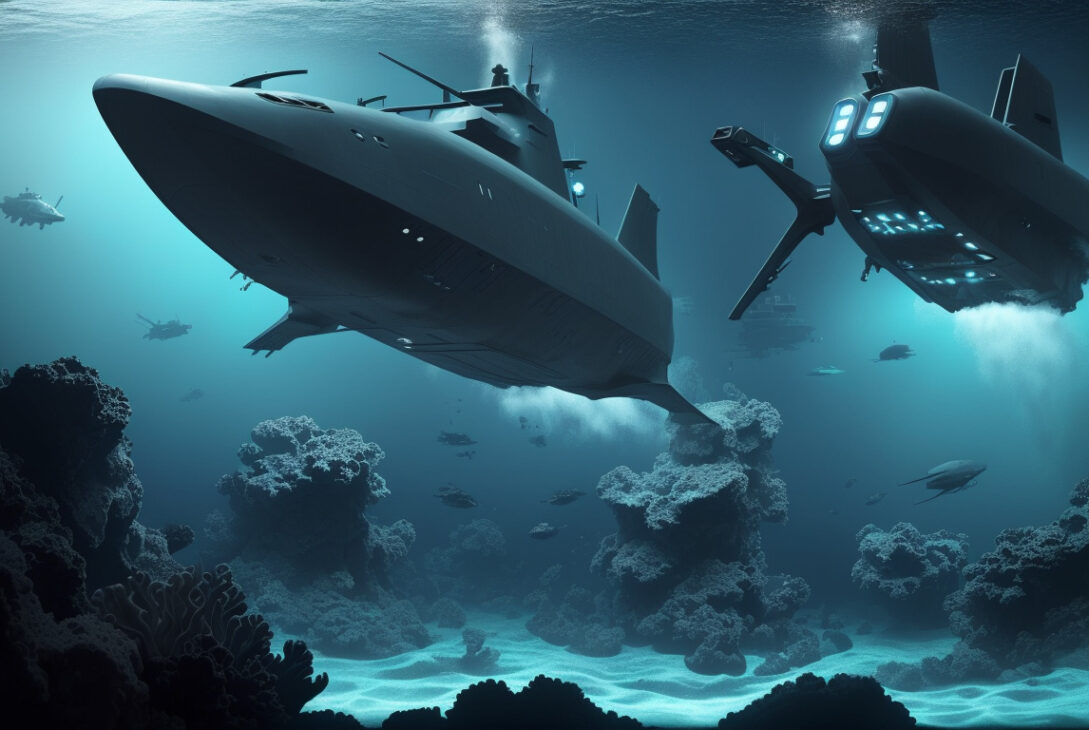Billion-Dollar Coffins? Emerging Technologies Could Expose Aukus Nuclear Submarines to Detection
Sydney, Australia — Australia’s anticipated fleet of Aukus nuclear-powered submarines, touted by defense officials as “apex predators of the oceans,” may soon face new vulnerabilities due to rapid advancements in submarine detection technology. The future invisibility of these billion-dollar vessels faces unprecedented challenges as quantum sensing, satellite tracking, artificial intelligence (AI), and other cutting-edge tools threaten to make once opaque ocean depths increasingly transparent.
The Rise and Potential Fall of the Apex Predator
For decades, nuclear submarines have dominated underwater warfare, combining stealth, speed, and lethal firepower. Their near-undetectable nature has granted countries owning such submarines a strategic “second-strike” nuclear deterrent capability—ensuring any attack could be met with a devastating response from hidden submarines submerged beneath the seas.
Jonathan Mead, head of the Australian Submarine Agency, described Australia’s upcoming nuclear submarines as possessing unmatched power beneath the waves only two years ago. Yet, as history shows, dominant military technologies can become outdated when confronted with disruptive innovation. The battleship and the tank were once supreme; their supremacy ultimately eroded by new technology and tactics.
Accelerating Advancements in Detection
In recent years, scientific and military advancements—many reported by China, the very nation the Aukus pact aims to counter—have driven an accelerating arms race under the seas. Vast sonar arrays, quantum sensors capable of detecting atomic-level environmental changes, AI-powered data analysis, and increasingly sophisticated satellite monitoring are combining to erode the traditional stealth advantage of submarines.
Researchers have developed seabed sensors able to pick up faint electromagnetic signals from a rotating submarine propeller at distances up to 20 kilometers—about ten times farther than previous capabilities. Airborne magnetometers now can track the persistent magnetic trails left in a submarine’s wake. Quantum sensors mounted on drones promise even greater detection accuracy and scalability, at costs far below existing NATO systems.
The integration of AI amplifies these capabilities, enabling real-time processing of enormous data volumes to identify subtle patterns and anomalies imperceptible to human analysts. The detection of tiny ocean surface ripples, minute thermal changes, and magnetic disturbances all contribute to unveiling submarine movements in vital sea lanes and coastal areas.
Challenges and Countermeasures
While detection technologies advance, submarine designers have not stood still. Efforts to evade new sensors include the use of anechoic tiles to absorb sonar, cooling systems to reduce infrared and thermal signatures, magnetic degaussing to minimize magnetic distortion, and pump-jet propulsors to lessen wake disturbances.
Nevertheless, experts caution that emerging science may ultimately make large portions of the ocean more transparent. Dr. Anne-Marie Grisogono of Flinders University, co-author of the 2020 report Transparent Oceans, states there is a near certainty that nuclear submarines will become detectable globally by the mid-21st century, if not sooner given recent AI-driven technological leaps.
Implications for Australia’s $368 Billion Investment
Australia plans to invest approximately A$368 billion by the mid-2050s in its Aukus nuclear-powered submarine fleet—comprised initially of US Virginia-class boats and later domestically built vessels. The first Australian-built submarine is expected to launch in the early 2040s, with up to eight boats planned.
The prospect that these expensive submarines might eventually become vulnerable calls into question the long-term strategic value of such investments. One stark assessment warns that these submarines could end up as “billion-dollar coffins” if detection technologies render them obsolete or easily targeted.
Further complicating the issue, the United States itself struggles to meet its submarine production goals, with current fleet numbers below desired levels, affecting timelines for Australia’s acquisition.
A Call for Strategic Reassessment
Given the rapid and dynamic nature of underwater detection, defense analysts argue for a broader reassessment of Australia’s military strategy. Advanced technologies not only threaten submarine stealth but also open opportunities for alternative defense strategies potentially more cost-effective and flexible.
Dr. Grisogono emphasizes the importance of asking “bigger questions” surrounding the future of undersea warfare rather than assuming current advantages will persist indefinitely.
As oceans potentially become less of a sanctuary for stealthy submarines, Australia faces a critical juncture: adapt to the shifting technological landscape or risk investing billions in a fleet vulnerable to detection. This evolving underwater arms race underscores the broader challenge nations face in preserving strategic deterrence in an era of rapid scientific innovation.










